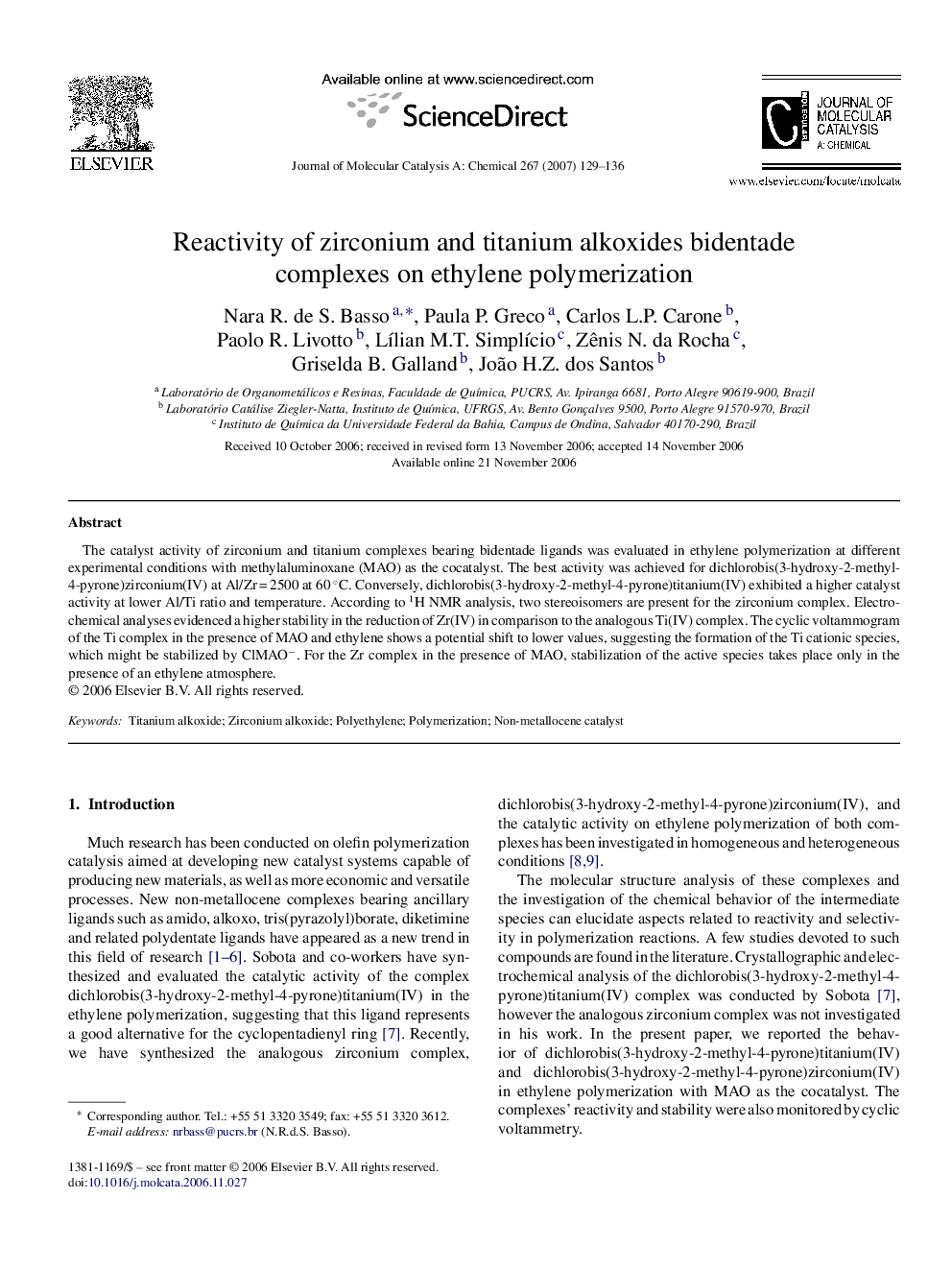| Article ID | Journal | Published Year | Pages | File Type |
|---|---|---|---|---|
| 68789 | Journal of Molecular Catalysis A: Chemical | 2007 | 8 Pages |
The catalyst activity of zirconium and titanium complexes bearing bidentade ligands was evaluated in ethylene polymerization at different experimental conditions with methylaluminoxane (MAO) as the cocatalyst. The best activity was achieved for dichlorobis(3-hydroxy-2-methyl-4-pyrone)zirconium(IV) at Al/Zr = 2500 at 60 °C. Conversely, dichlorobis(3-hydroxy-2-methyl-4-pyrone)titanium(IV) exhibited a higher catalyst activity at lower Al/Ti ratio and temperature. According to 1H NMR analysis, two stereoisomers are present for the zirconium complex. Electrochemical analyses evidenced a higher stability in the reduction of Zr(IV) in comparison to the analogous Ti(IV) complex. The cyclic voltammogram of the Ti complex in the presence of MAO and ethylene shows a potential shift to lower values, suggesting the formation of the Ti cationic species, which might be stabilized by ClMAO−. For the Zr complex in the presence of MAO, stabilization of the active species takes place only in the presence of an ethylene atmosphere.
Graphical abstractCatalyst activity of zirconium and titanium complexes bearing bidentade ligands were evaluated in ethylene polymerization at different experimental conditions with methylaluminoxane (MAO) as the cocatalyst. According to 1H NMR analysis, two stereoisomers are present for the zirconium complex. The complexes reactivity and stability were also monitored by cyclic voltammetry. Figure optionsDownload full-size imageDownload as PowerPoint slide
